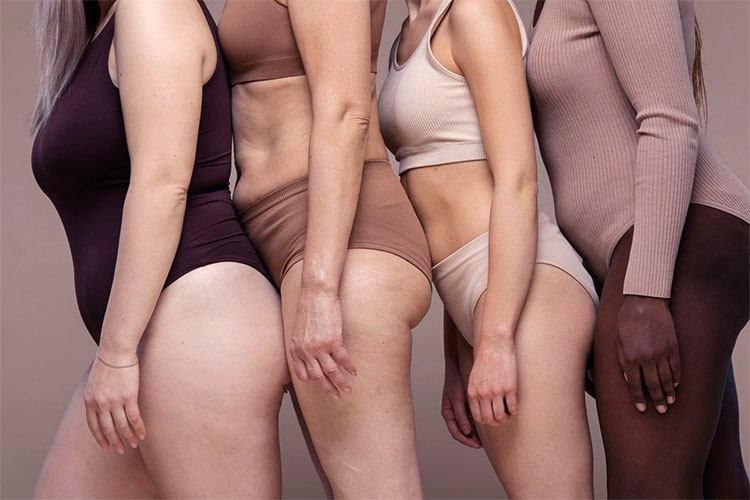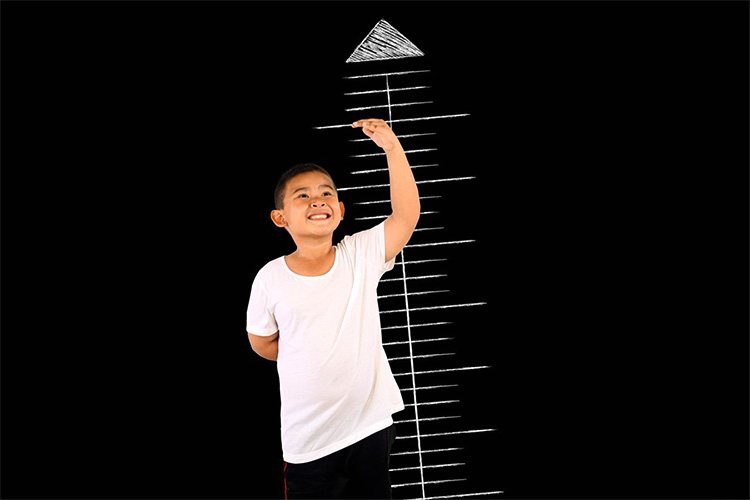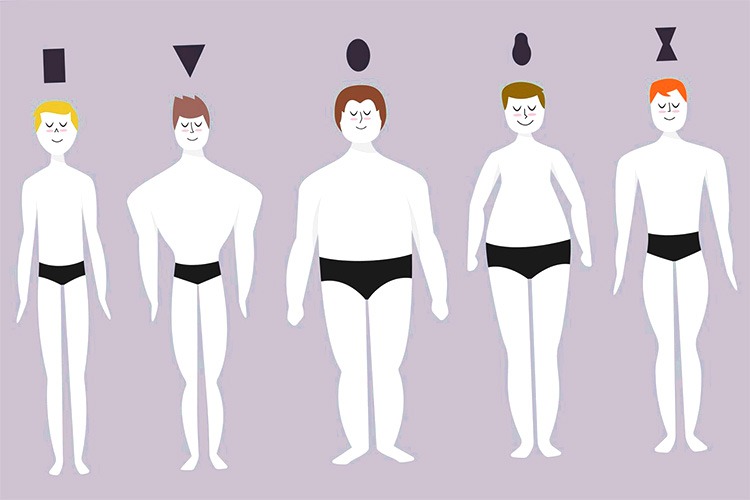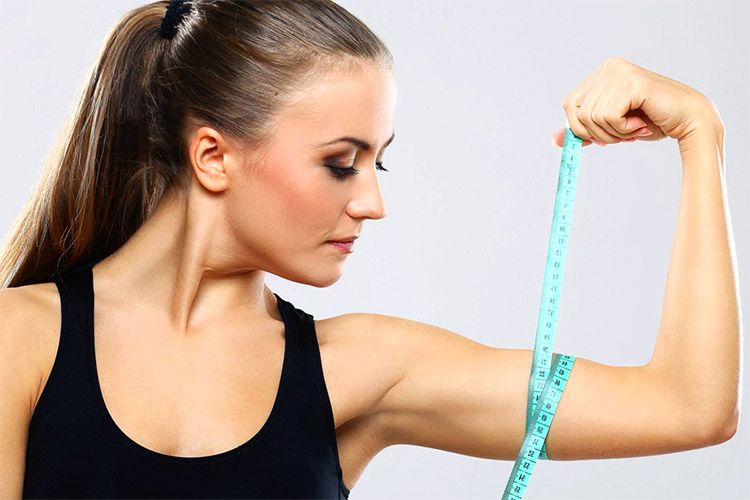Contents
Understanding how to measure body proportions is key to embracing your unique shape and making informed choices about your style and fitness goals.
This article explores the significance of measuring your body proportions, from enhancing self-awareness to selecting the perfect clothing fit.
It guides you through the process of taking accurate measurements and helps you identify your body type.
Plus, discover tailored dressing tips for various body shapes, enableing you to celebrate your figure with confidence.
Why is it Important to Measure Body Proportions?
Measuring body proportions is crucial for understanding physical appearance, as it allows individuals to assess their body dimensions, which include height, width, and various circumferences such as waist and hip measurements.
This understanding not only influences clothing fit but also plays a significant role in achieving fitness goals and enhancing self-confidence.
1. Better Understanding of Your Body
A better understanding of your body through accurate body measurements can enable you to embrace your unique body type and height, aiding in the identification of your body symmetry and proportionality.
This heightened self-awareness is crucial, as it influences how individuals perceive themselves and ultimately contributes to their overall body confidence.
By recognizing specific body measurements – such as waist, hips, and shoulders – fitness assessments can provide a clearer picture of personal health and help tailor fitness goals. Individuals can make informed decisions about their body care and wellness strategies, fostering a positive mindset in the journey toward self-acceptance.
Understanding various body types also helps in selecting appropriate clothing and workout routines that align with one’s distinct physique, promoting not just physical well-being but also emotional resilience.
2. Helps in Choosing the Right Clothing

Understanding your body proportions is vital when it comes to choosing the right clothing, as it directly impacts the fit, comfort, and overall visual appeal of your outfits.
Accurate measurements serve as a foundation for this understanding, allowing individuals to navigate the complexities of size charts with confidence.
By comparing their measurements against standard sizing guides, they can discern which styles flatter their unique body shapes. It’s crucial to remember that not all brands adhere to the same sizing conventions – thus, knowing one’s measurements ensures a more tailored shopping experience.
By understanding how to measure body proportions, you can work with a professional tailor to refine the fit, turning an ordinary garment into a figure-enhancing masterpiece.
Techniques like paying attention to fabric drape and garment cut can elevate a person’s wardrobe, ensuring that clothing not only fits but also accentuates their best features.
3. Aids in Fitness and Health Goals
Accurate body measurements play a crucial role in achieving fitness and health goals by providing benchmarks for tracking progress in areas such as body fat percentage and BMI (Body Mass Index).
These metrics are not just numbers – they reflect the body’s composition and changes that occur through systematic training and dietary adjustments.
By employing these measurements, individuals can tailor workout routines more effectively and make informed choices about nutrition, both of which are integral to improving overall performance and health.
This approach aligns with exercise science principles, which emphasize the significance of personalized fitness assessments. Understanding how body composition influences metabolism and energy levels allows for optimized programs that lead to sustainable results, making the journey towards personal fitness goals both measurable and achievable.
How to Measure Body Proportions
Measuring body proportions accurately requires the right measurement techniques and tools, including a tape measure, calipers, and sometimes even digital measurements through online body calculators, to ensure precise body dimensions such as height, width, waist measurement, hip circumference, and inseam length.
1. Gather Necessary Tools
To start learning how to measure body proportions, it’s essential to have the right tools, including a flexible tape measure, precise calipers, and possibly digital measurements through wearable technology.
Each of these tools plays a crucial role in ensuring accuracy and consistency.
A flexible tape measure is particularly useful for measuring large areas such as the waist or shoulders, allowing the user to navigate around curves easily.
Calipers, on the other hand, provide a more precise measurement for smaller dimensions or thicknesses, making them ideal for capturing details such as skinfold thickness, which can be vital for fitness assessments.
Digital measurements are becoming increasingly popular – they not only save time but also reduce human error, facilitating a more efficient evaluation of body proportions.
By utilizing these tools effectively, accurate tracking of changes in body measurements can be achieved, which is important for anyone looking to monitor their fitness or health progress.
2. Measure Your Height

Measuring your height accurately is a fundamental step in determining body proportions and should be done using a flat surface and a vertical wall to ensure a precise visual representation.
To begin the process, stand straight with your back flat against the wall, ensuring your heels are touching the base.
Use a flat object, like a book or a ruler, to push down on the top of your head, creating a clear mark on the wall. It’s essential to align your head so that your chin is parallel to the ground, which allows for a true measurement of body dimensions.
Remember, even small errors in measurement can lead to inaccuracies in later assessments such as clothing fit or health evaluations.
3. Measure Your Waist-to-Hip Ratio
The waist-to-hip ratio is a critical measurement that provides insight into body symmetry and health metrics, calculated by dividing your waist measurement by your hip circumference.
This ratio is especially significant in evaluating the distribution of body fat, which can serve as a predictor for various health issues, such as cardiovascular disease and type 2 diabetes.
To measure accurately, one should stand straight and locate the narrowest part of the waist, typically just above the belly button, using a flexible measuring tape. Next, measure the fullest part of the hips, which is often around the widest portion of the buttocks.
By ensuring these measurements are taken at the right points, individuals can gain valuable information about their body proportions and overall health profile, making it an essential calculation for anyone focused on wellness.
4. Measure Your Shoulder-to-Waist Ratio
Measuring your shoulder-to-waist ratio involves comparing the width of your shoulders to your waist measurement, which is essential for assessing body proportions and achieving visual balance.
To begin this process, stand straight with your arms at your sides. Use a flexible measuring tape to measure the widest part of your shoulders – this point typically lies at the top of your shoulder blades.
Next, measure your waist circumference at its narrowest point, usually just above the belly button. Once both measurements are taken, calculate the shoulder-to-waist ratio by dividing the shoulder width by the waist circumference.
Understanding this ratio can provide insight into your overall body shape and help you determine how to measure body proportions effectively, especially if you’re aiming for that sought-after V-shape, often associated with athleticism and health.
5. Measure Your Inseam
Inseam measurement refers to the length from the top of your inner thigh to the bottom of your ankle, and it is a vital component of body measurements for ensuring proper clothing fit.
Taking an accurate inseam measurement is crucial as it directly influences how garments fit the wearer, affecting comfort and style.
If the inseam is too short, pants may ride up, while an excessively long inseam can lead to a sloppy appearance, detracting from the overall look.
A precise measurement not only helps in choosing the right size but also aligns with various style guidelines, ensuring that trousers, jeans, and leggings complement the wearer’s silhouette.
By understanding and applying the inseam measurement alongside other relevant body measurements, one can achieve the perfect balance between style and wearability.
6. Measure Your Arm Length
Measuring your arm length is crucial for understanding body dimensions and can be achieved by measuring from the top of your shoulder to the wrist, which is essential for ergonomic design and clothing fit.
This measurement not only aids in selecting the right size for clothing, ensuring comfort and freedom of movement, but it also plays a vital role in ergonomic design.
By knowing the arm length, designers can create products such as chairs, desks, and tools that accommodate various body spans effectively.
Understanding the relationship between arm length and overall body proportions can assist individuals in making informed choices about their personal style, promoting both functionality and aesthetic appeal.
Whether it’s finding the perfect shirt or optimizing workstation layout, accurate arm length measurement enhances daily comfort and efficiency. Knowing how to measure body proportions can make all the difference.
How to Use Your Body Proportions to Determine Your Body Type
Using your body proportions effectively allows you to identify your body type, which can significantly enhance your understanding of aesthetic ratios and visual appeal, leading to better wardrobe choices and confidence in appearance.
How to Dress According to Your Body Proportions

Dressing according to your body proportions is essential for achieving a look that flatters your body shape, enhances your personal style, and aligns with current fashion trends.
1. Tips for Hourglass Body Shape
For those with an hourglass body shape, the key to enhancing your visual appeal lies in selecting clothing that accentuates your waist while balancing your upper and lower body proportions.
This can be achieved through techniques such as choosing wrap dresses or fitted tops that define the waist, paired with pencil skirts or tailored trousers that follow the natural curves.
Opting for fabrics that have a bit of stretch can further enhance comfort while providing a sleek silhouette. Utilizing vertical lines, such as in peplum tops or high-waisted pants, can help create the illusion of longer legs, contributing to a harmonious overall look.
Accessories like wide belts or statement jewelry at the neckline can also draw the eye to the waist, highlighting its natural definition.
2. Tips for Pear Body Shape
Individuals with a pear body shape should aim to elongate the upper body while emphasizing the waist, using dressing techniques that create visual balance across their proportions.
To achieve this sartorial harmony, one might consider styles that draw attention to the shoulders and bust, such as boat necks or off-the-shoulder tops. These designs help to broaden the upper silhouette, while simultaneously enhancing the overall figure’s proportions.
Incorporating structured blazers or statement necklaces can further accentuate this area. In terms of bottoms, opting for A-line skirts or wide-leg trousers can beautifully complement the curves without adding unnecessary bulk.
Choosing the right fabrics is also important – lighter materials for tops and tailored finishes for pants work well to create that sought-after symmetry.
3. Tips for Apple Body Shape
For an apple body shape, it is important to choose clothing that flatters the torso while providing proportionality between the shoulders and hips, creating a streamlined silhouette.
To achieve this, opting for structured tops with V-necks or scoop necklines can help elongate the neckline and draw attention upwards.
In addition, flowing blouses with empire waists can gently skim over the midsection, promoting a balanced appearance.
When selecting bottoms, high-waisted trousers or A-line skirts work beautifully, allowing for a comfortable fit while providing shape without clinging to the body.
Pairing these elements with tailored jackets not only enhances the overall look but also aligns perfectly with the principles of how to measure body proportions, ensuring that comfort meets style while emphasizing natural curves for an elegant yet fashionable ensemble.
4. Tips for Rectangle Body Shape
To enhance a rectangle body shape, focus on creating curves and enhancing the waist, using dressing techniques that add visual appeal and balance to your overall proportions.
This involves selecting clothing styles that draw attention to the waistline, such as belted dresses or wrap tops that cinch the middle, creating that coveted hourglass silhouette.
Incorporating layered tops or peplum styles can also contribute to the appearance of curves. When choosing bottoms, consider options that widen at the hips, such as A-line skirts or wide-leg trousers, to add dimension.
Employing color blocking or strategic patterns can help direct the eye to desired areas, enhancing visual interest. Accessories like statement belts or jewelry can also elevate the overall look, making an impactful statement while maintaining a balanced aesthetic.
5. Tips for Inverted Triangle Body Shape
For an inverted triangle body shape, the goal is to balance broader shoulders with a narrower lower body, using clothing that emphasizes lower body proportions to create visual balance.
This can be effectively achieved through strategic styling choices that draw attention away from the upper body while enhancing the silhouette below.
Opting for A-line skirts or wide-leg pants can subtly widen the appearance of hips, contributing to a more proportionate figure. Incorporating textures or patterns on the lower garments can enhance how to measure body proportions effectively, making them the focal point of any outfit.
When accessorizing, consider statement shoes or bold jewelry that directs the eye downward, promoting an elongated look that harmonizes with the overall aesthetic of an inverted triangle body shape.

